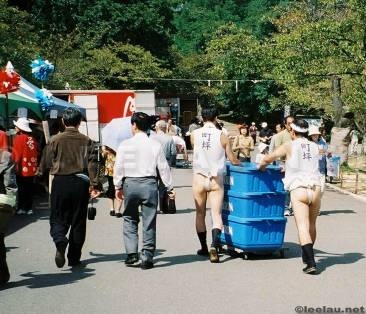
Aikido Trip to Japan Fall 2003.
A day at Himeji-jo and Kyoto!
We were guided today by Otsuka San without whom we would never have bought cool pottery or had dinner at a fine Japanese restaurant. On this day a festival was happening where many scantilly clad butts wandered the streets.

Himegi-Jo - Built in 1580 by Tokugawa Ieyasu after defeating
Toyotomi's armies. It was home to 48 successive Lords since that time. The castle
contains a 5 story main Donjon and three smaller Donjons. The castle is surrounded
by a moat with defensive circular and triangular holes punctuating the walls
for firing guns, shooting arrows and for pouring boiling water or oil at would
be attackers. (Lonely Planet)
(Robb)
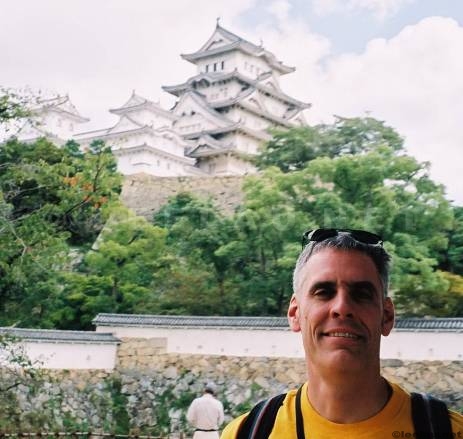
Inner Courtyard
(Wanda, Rob, Steve, Walter, Robb and David)
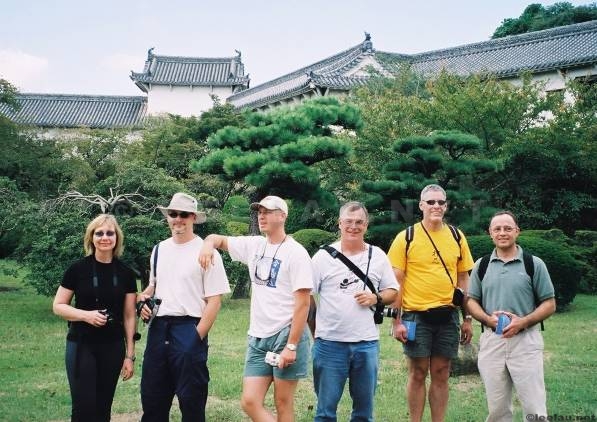
Looking over the city from the top floor of the castle. "Shachihoko - a charm to guard against fire and ward off disaster - the "shachihoko" a roof ornament on the ridges of the roof are abstract representation of fish in the sea. The head, actually resembling a tiger, leers fiercely up from down in the foam while the tail energetically throws up waves and causes rain to fall. (Tourist Brochure)
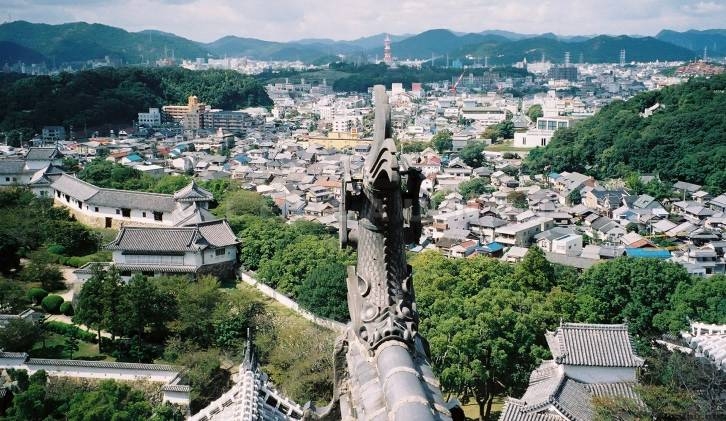
Looking down into the castle courtyard.
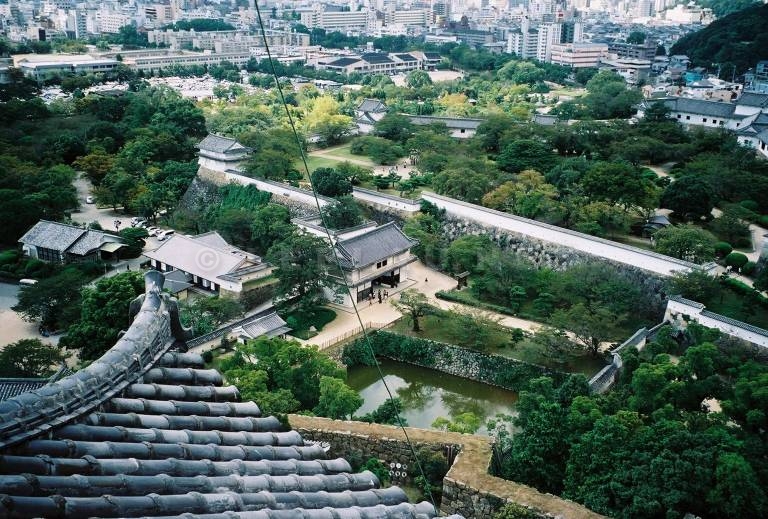
Looking down at the Festival.
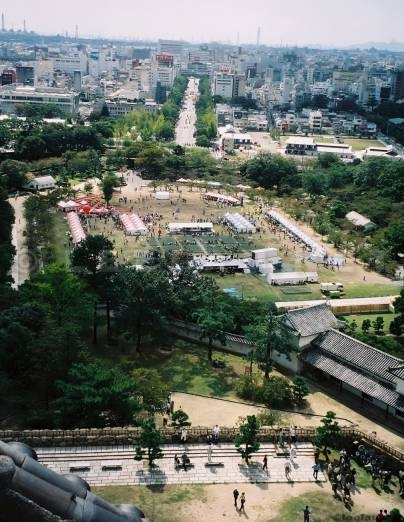
Looking back up at the main castle. Here you can see the holes in the walls used to shoot guns and arrows through.
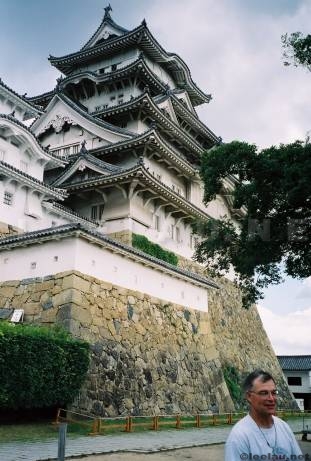
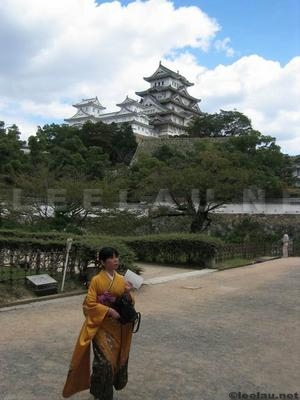
Dressed up for Dinner after we participated in a 52 Dojo demonstration for all the Dojo's in the Osaka area.
(Wanda, Steve, Raul, Peter, John, Rob, Marge, Sharon, Sensei, Robb, Hilary, Pat, Bruce, Walter, David and Cecil)
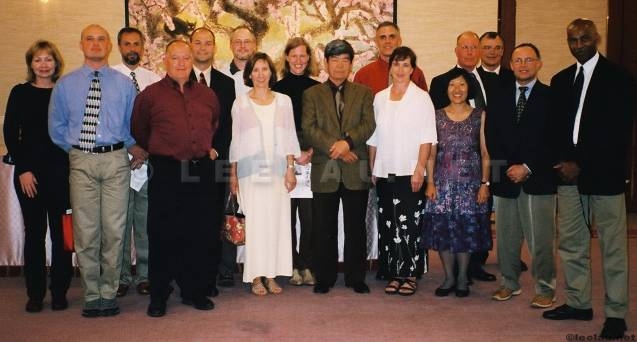
Kyoto - Established as the second capital city of Japan in 794. Kyoto has been home to the Japanese Imperial family from 794 to 1868 (when the Meiji Restoration moved the capital to Tokyo). Although not the seat of political power of the country which changed hands between the shogunate over the times. Kyoto was also one of the few major cities not bombed during the 2nd World War.
Kinkaku-ji
- The Golden Temple
Originally constructed in 1397 as a retirement villa for the Shogun Ashikaga
Yoshimitsu, it was later converted to a temple by his son. In 1950 a monk burned
it down to consummate his obsession with the temple. It was then rebuilt to
its current glory in 1955.
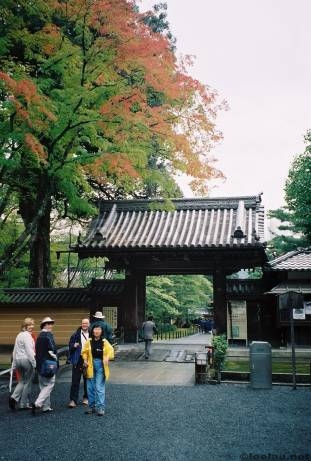
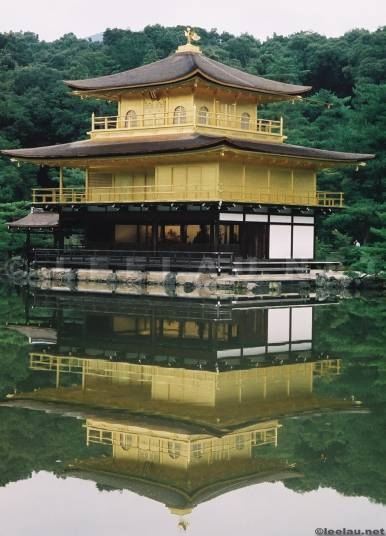
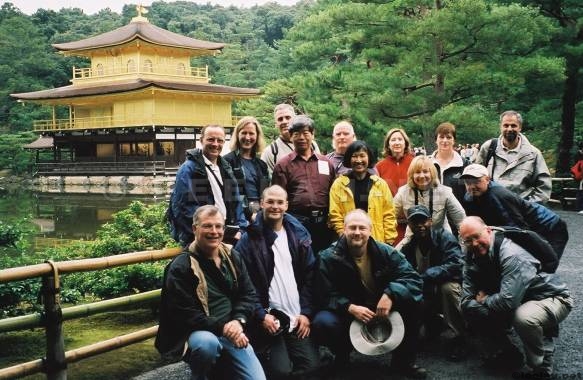
A sculptured pine in the garden.
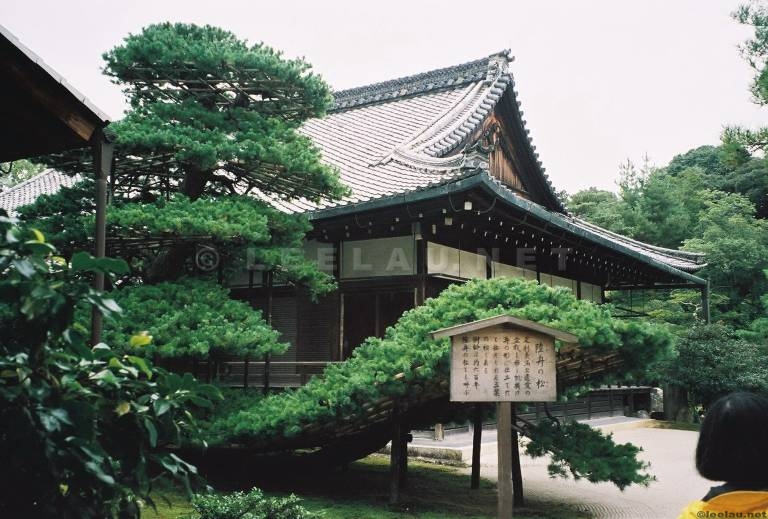
A waterfall (Ryumon-baku) and underneath the falls is a rather large stone known as the Carp Stone, named to impress upon the viewer the image of carp swimming upstream when spawning
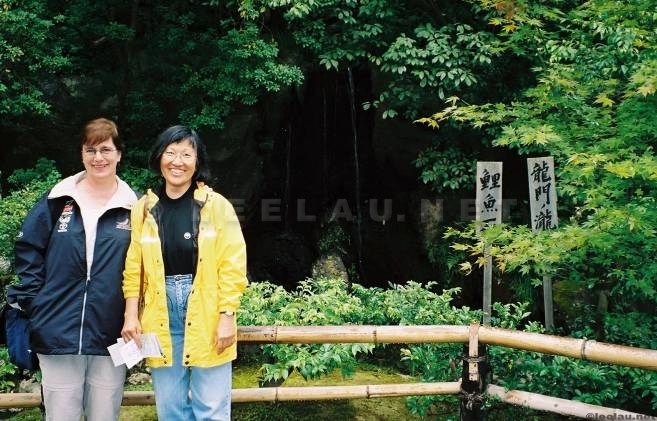
Along this path is a simple tea house built in honor of a visit by Emperor Go-Mizuno-o in the 17th century. A stark contrast from Kinkaku down below. The simplicity of the tea house is meant to focus the attention of the guest on the tea ceremony itself, not the surroundings.
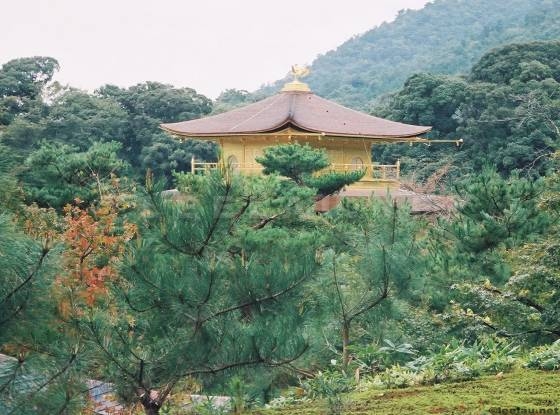
Togetsu-kyo - The main landmark in Arashiyama.
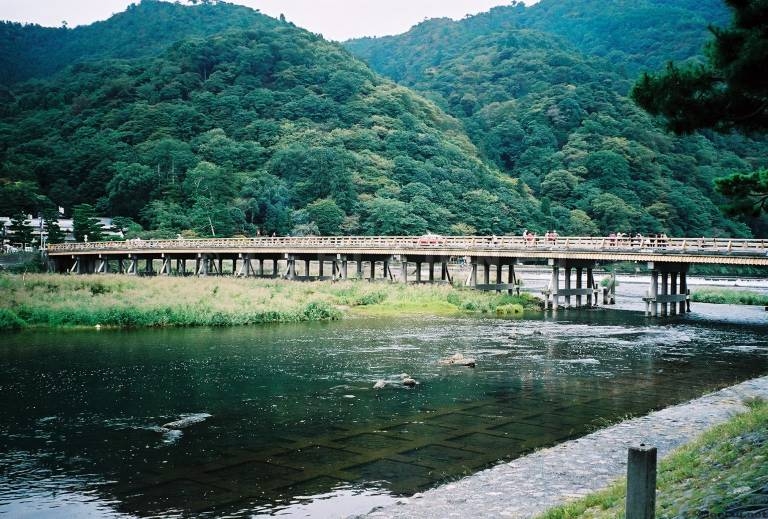
A small Shrine in the bamboo groves near the bridge
(Cecil, Sensei, Hilary, John)
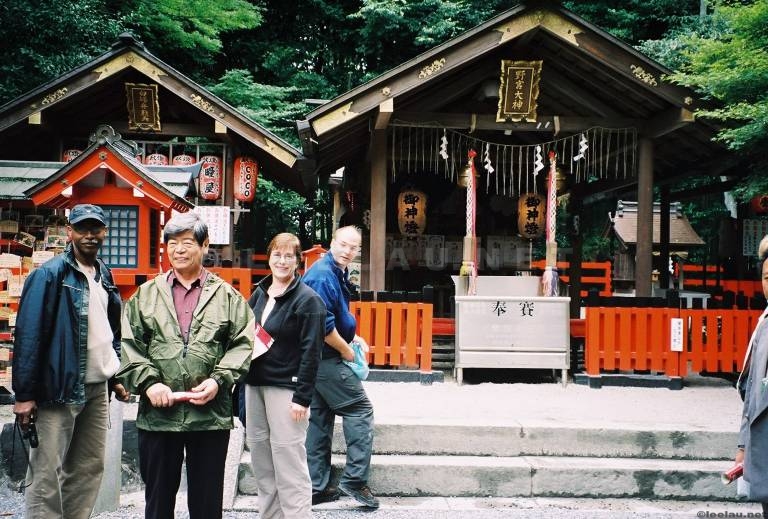
Bamboo forest
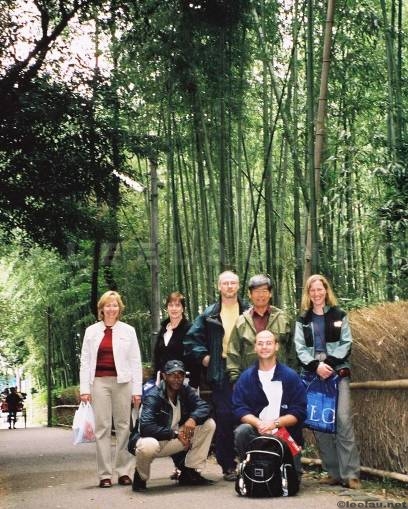
The lunch of Tofu...
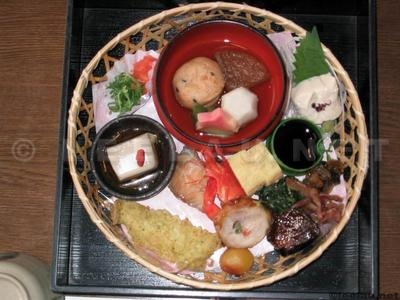
Kiyomizu-dera - Clear Water Temple
Established over 1200 years ago at the end of the Nara period in 778.The main
focus of worship here is the Kannon Bosatsu (Bodhisattva of mercy and compassion).
Sai-mon - West Gate
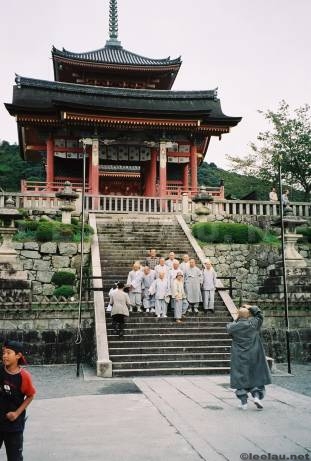
Oku-no-in - Innermost Temple
(Sensei, Sharon, David, John)
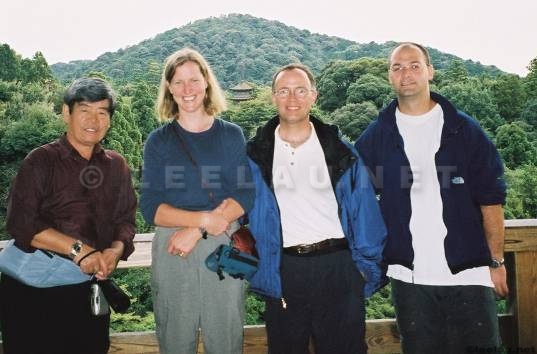
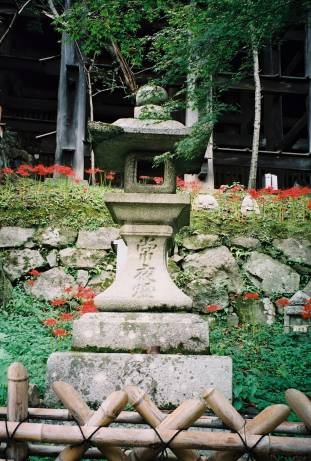
On a lighter note, if you are ever in this area again, this is a good place to buy Pottery. Back to Chi-san for one last cramped night before the Bullit trail to Hiroshima!